The drive from Seoul to the demilitarised zone, or DMZ, only took about 40 minutes.
It is a strip of no man's land that separates North and South Korea and is the most heavily fortified border in the world.
The highway leading north was lined with old military outposts and sections of barbed-wire fencing, reminders of past conflicts that have led to the current divide.
As we drove, however, there were also reminders of a far more modern Korea.
Our bus driver was the manager of a K-pop (Korean popular music) band and proudly played their songs on a speaker as we travelled towards the border.

South Korea has experienced extraordinary economic growth since the Korean War (1950-1953) and has become a global trendsetter in high-tech and culture in areas such as the aforementioned K-pop and K-drama.
South Korea was one of the poorest countries in the world following the war but it is now the 13th largest economy globally and 4th largest in Asia Pacific.
Before we got to the DMZ, we had time for a pit stop.
We pulled into a large car park full of tour buses.
There was a visitors' centre, an amusement park and souvenir shops selling fridge magnets, all to service the tourists that flock to the border to catch a glimpse of the forbidden, isolated land that is on their doorstep.
The visitors' centre had an American-style burger restaurant and a Dunkin' Donuts.
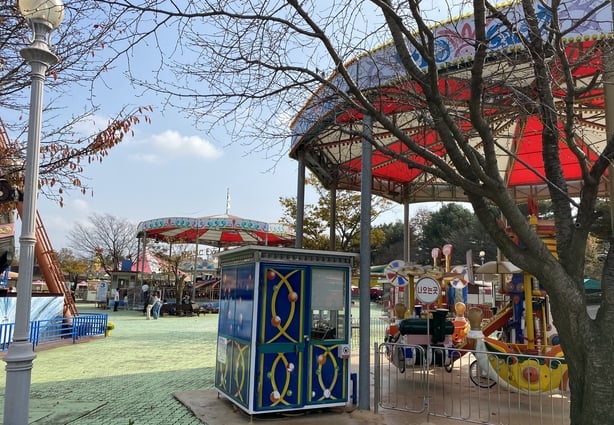
Symbols of western capitalism that would seem completely alien to the people living just a few kilometres away in North Korea.
On Thursday, Leo Varadkar became the first Taoiseach to visit the DMZ.
As members of the media, we were allowed to travel with the Irish delegation to cover the trip.
In advance we had been given a list of rules to follow once inside the DMZ.
There is also a dress code with banned items including crop tops, torn pants and leather biker vests.
With everyone suitably attired, a US Naval officer with Irish heritage, Lieutenant John Paul Mulligan, briefed the delegation ahead of our tour.
Another officer then addressed the group.
"Before we enter the DMZ, I have to ask the following question: Do any of you intend to defect to North Korea?" he inquired.
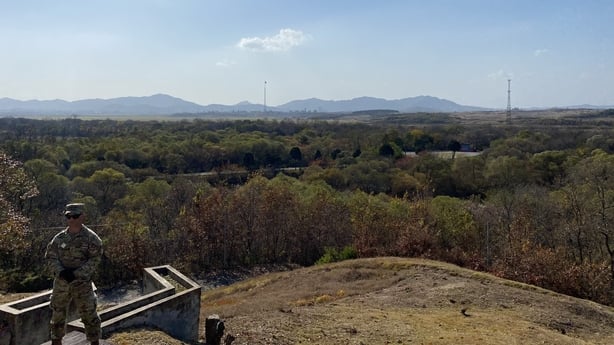
Once he was satisfied that none of us were planning to break free from the tour group, we boarded a bus and entered no man's land.
"Most of this area has been de-mined," our guide told us as we drove through winding roadways.
The use of the term "most" caused some concern among the bus passengers.
A few fields away, a North Korean flag atop a tall tower rose from the yellowed grasses.
We passed through more layers of security cordons and once inside the DMZ, we were allowed off the bus.
The Taoiseach was given a tour of the various checkpoints and buildings by United Nations military personnel.
At one point he was technically on North Korean soil, standing inside a blue conference building that sits directly on the border.
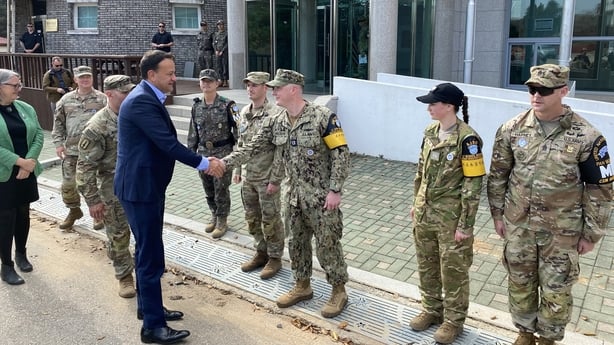
Just a few metres beyond that structure, on the North Korean side, was a larger office building with blacked out windows.
"If anyone comes out of that building, please don't wave or make any gestures," we were told by one of our military guides.
"They will use anything for propaganda," he said.
Nobody did come out of the building but no doubt they were watching from behind those tinted windows wondering what all the fuss was about.
After the visit, the Taoiseach described the experience as surreal.
"I have been to many border zones in the world but nothing like this," Mr Varadkar said. "It is here 70 years. It is a piece of the Cold War that still exists."
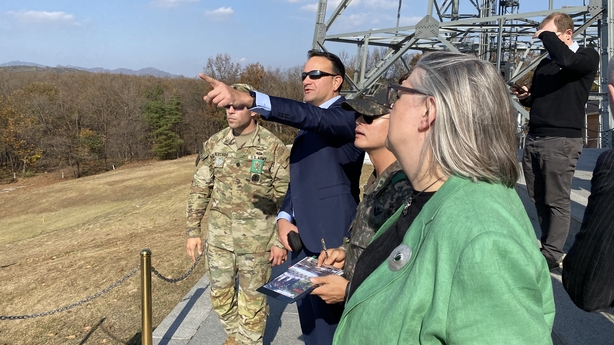
"On one level, it is extraordinary that the UN, US and Koreans set this up in such a way that peace is maintained, that an accidental conflict doesn't start," he said.
"But it is also really sad because this is a divided peninsula, Korean people divided between two states for 70 years and I am really sad that this is the case," Mr Varadkar added.
At the Korean War Memorial in Seoul, there is a monument to the Irish people who were killed in the conflict.
Soldiers and civilians from Ireland were among those who lost their lives, including an Anglican nun and seven Columban priests.
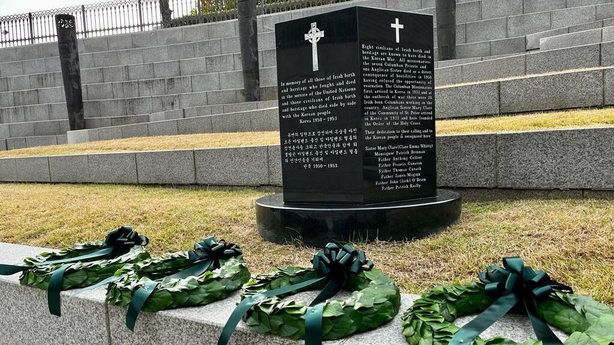
Both Korea and Ireland have known conflict and both have seen borders imposed on their lands.
But the Irish delegation that visited Seoul this week brought a message of hope, that barriers can come down and divisions can heal.
After we left the DMZ, we were reunited with our K-pop bus driver who once more soundtracked our journey back to Seoul.
As we passed the amusement parks and souvenir shops, with North Korea in the rear-view mirror, we left behind a land that was just metres away but worlds apart from its nearest neighbour.







